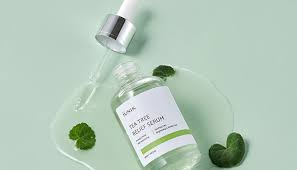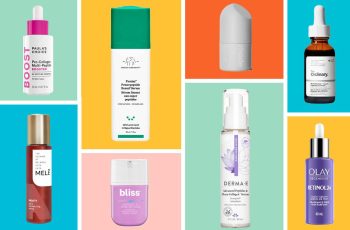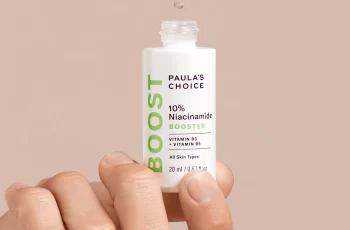
The Best Skin-Care Ingredients and Products to Shield Against Environmental Damage
Whether you’re indoors or out, your skin is affected by the environment.
From UV rays to blue light and pollution, “all these environmental factors work by creating oxidative damage in the skin, which breaks down collagen and may also serve to damage the barrier function of the skin. A damaged barrier makes skin more prone to the ill effects of UV damage,” says Jennifer Chwalek, MD, a dermatologist at Unionderm in New York City.
Oxidative damage or stress happens when the level of harmful free radicals present surpasses that of the neutralizing “good guy” antioxidants, according to research.
Here, dermatologists talk about the biggest environmental factors that damage skin, leading to aging and increased skin cancer risk, plus the best products and ingredients to shield your dermis from damage.
UV Rays Are the Most Significant Threat to Skin
First up: the sun. “UV radiation is the most significant environmental factor and also one of the most recognized when it comes to skin damage and aging,” says Marisa Garshick, MD, a dermatologist at Medical Dermatology and Cosmetic Surgery in New York City.
UV rays trigger the production of free radicals in the skin that lead to DNA damage and the breakdown of collagen and elastin in the skin, causing wrinkles, notes the World Health Organization (WHO); it also stimulates the melanin production that leads to skin discolorations, says Garshick. According to research, melanin is a pigment that gives skin its color. Beyond aesthetics is the increased risk of skin cancers. It’s the cumulative effect of sun exposure that, over time, can lead to the formation of non-melanoma skin cancers, including basal cell carcinoma (BCC) and squamous cell carcinoma (SCC); early childhood UV exposure may be a bigger factor in melanoma skin cancers, which can be deadly, the WHO points out.
The Sun Isn’t the Only Skin Scourge
Blue light or visible light is one potential skin ager that experts are increasingly wary of. “Blue light lies on the visible light spectrum. It is high-energy wavelength light that comes from our computer screens and phones,” says Garshick. While research is still emerging and studies tend to be very small, some suggest that keeping your face stuck in a screen all day could also lead to premature aging.
For example, one study found that visible light increased free radical formation in the skin. And a review of research suggested that this free-radical-generating light also includes the flash on smartphones. (The title even asks if taking selfies can lead to premature aging.)
Air Pollution Plays a Role in Accelerating Skin Aging
Air pollution doesn’t just affect how you breathe. As the U.S. Environmental Protection Agency (EPA) warns, it can also create the same free radical damage to skin as light. “Exposure to air pollution, which includes particulate matter, nitrogen dioxide, hydrocarbons, and ozone, creates oxidative damage in the skin that increases inflammation,” says Dr. Chwalek, whose statement is supported by data cited in a review.
Consider particulate matter (PM), for instance. PM is a mixture of small particles and liquid droplets, such as organic chemicals and soil or dust, according to the EPA. A study found that PM stimulates skin inflammation and impairs collagen synthesis.
Over time, this may cause sagging and fine lines and wrinkles. “Pollution creates the free radicals in skin that prematurely chew up collagen and elastin,” says Rebecca Kazin, MD, a board-certified dermatologist at ICON Dermatology and Aesthetics in North Bethesda, Maryland.
What’s more, if you’re dealing with dark spots appearing on your face, you may have cars to blame. One article also showed that exposure to air particles from traffic is linked to pigment spots on cheeks, Garshick points out.
8 Steps for Guarding Your Skin Against the Environment
1. Try a Mineral Sunscreen to Avoid Sun Damage
Wearing sunscreen is the No. 1 goal, but many dermatologists like Chwalek prefer SPFs that contain titanium dioxide or zinc oxide, which are ingredients that physically block UV rays. “Chemical sunscreens allow some absorption of light, which is why I think physical blockers are superior. They’re a bit more aggressive in protecting you from UV rays,” she says. You’ll find these in sunscreens that have “mineral-based” on the label.
2. Pick a Tinted Sunscreen for a Product That Does Double Duty
To better block blue light, look for a tinted moisturizer with SPF, says Garshick. Iron oxides, which are formulated into tinted sunscreens, are the ingredient that shields skin from this type of light spectrum. (It’s what provides the tint.) She likes EltaMD UV Daily Tinted Broad-Spectrum SPF 40 or SkinCeuticals Physical Fusion UV Defense SPF 50.
3. Pick a Functional Powder for On-the-Go Sun Protection
Visible light can aggravate existing pigmentation problems, says Garshick, and you should have a product that you can reapply when indoors. Powders with a built-in SPF are great options because you can dust these on over existing makeup. They’re particularly useful if you work in an office and need a midday touch-up. Try Colorescience Sunforgettable Total Protection Brush-On Shield SPF 50.
4. Ramp Up on Red Algae to Guard Against Blue Light
If you don’t like tinted primers, another option is to look for a product with red algae, which is designed to protect against blue light, says Garshick. She likes Supergoop! Unseen Sunscreen.
5. Go for Vitamins C and E in the Morning
“Antioxidants neutralize the free radicals that are prematurely breaking down collagen and elastin,” says Garshick. Vitamin C often works better with the addition of vitamin E, according to research, so you’ll find them together in certain formulations, she says. One frequently recommended by dermatologists: SkinCeuticals C E Ferulic. Use this serum in the morning to prep skin with the defenses it needs during the day.
6. Opt for Antioxidants Like Glutathione and Resveratrol
Antioxidants have their place at night, too, as they can help repair damage done during the day, says Garshick. Look for resveratrol (which research has shown is a powerful antioxidant found in red wine that sops up free radicals) in SkinCeuticals Resveratrol B E. Garshick also recommends Good Science Beauty Skin Brightening Cream, as it’s packed with glutathione, another potent antioxidant that addresses dark spots to even tone, according to one study. You can also get antioxidants through supplements like Heliocare, which derives its sun-damage-fighting effects from the research-backed Polypodium leucotomos extract. However, it’s important to note that oral supplements are never a replacement for wearing sunscreen .
7. Wash Up Carefully Before Bed
“It’s important to wash off the daily buildup of dirt and grime. That’s why a part of every good anti-aging routine is a gentle cleanser,” says Garshick. A mild wash like Dove’s Deep Moisture Body Wash will clean skin while keeping the skin barrier intact, lessening the chance of irritation.
8. Protect in the P.M.
Use products that help clear out the dust and debris that build up on the skin’s surface, says Garshick. She likes Good Science Beauty Purifying Face Cream, which targets toxins with oligopeptide-10, a plant-based antimicrobial peptide, the product website notes. Another recommendation is Elizabeth Arden Prevage Hydrating Fluid, which uses idebenone, an antioxidant that clears up environmental damage.


